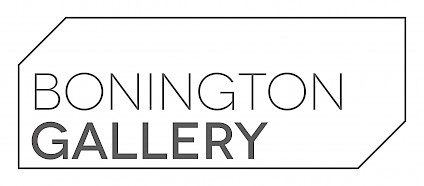Bonington Gallery presents: Of Clouds and Clocks
Of Clouds and Clocks is an afternoon of talks and discussions with leading artists and academics crossing the boundaries of arts, science, and computing, developed as part of the multidisciplinary exhibition Sensing Systems by Matt Woodham, at Bonington Gallery, on view Feb 15 - Mar 28.
Art and Science share a common goal: to challenge common views of reality. As a creative crossroad, the contemporary field of ArtScience has been gaining momentum in recent years. Successful ArtScience merges the objective and the subjective with equal voices. It investigates and shapes the intersection between artistic concepts and developments in science and technology; experimenting with new ways of conceiving knowledge.
In this afternoon symposium, a panel of artists, scientists and ArtScientists will share their interdisciplinary research. Experts in systems across scales, from galaxy evolution to molecular nanotechnology, will discuss common dynamics in nature.
Free. Booking recommended.
Studio Above&Below was founded by media artists Daria Jelonek and Perry-James Sugden in 2017, after graduating from the Royal College of Art. Currently based in South London, their collaboratively practice focuses on interactive and speculative projects, based on hands-on research at the intersection of art, technology and our environment. The artists aim to wire unseen connections together to create new experiences which they believe can change human behaviours for better interactions with our environment.
Dr. Joanna Boehnert is an environmental communicator, designer and educator. She is a lecturer in Design at the Loughborough University. She has worked as a Research Fellow (2015-2017) in Design at CREAM (the Centre for Research and Education in Arts and Media) at the University of Westminster. In 2013-2014 she was a Visiting Research Fellow at the Center for Science and Technology Policy Research (CSTPR) in CIRES (Cooperative Institute for Research in Environmental Sciences) at the University of Colorado. She is founding director of EcoLabs – a studio visualising complex environmental issues. Her research focuses on issues how images work to help audiences understand complex systems. She wrote the book Design, Ecology, Politics under contract with Bloomsbury Academic.
Meghan Gray is an observational extragalactic astronomer with interests in galaxy evolution and large-scale structure. She employs tools such as gravitational lensing to trace distributions of dark matter on large scales and uses multiwavelength observations to examine the luminous properties of galaxies. These observations are often compared against supercomputer simulations to understand how galaxies are influenced by their environments. Meghan will provide insight into large-scale structures and simulating the universe.
Ulrike Kuchner is an extragalactic astronomer as well as a visual artist based in the UK. In her research, Ulrike studies how mass is assembled in the universe and how galaxies form and evolve over their lifetime - which is just short of the age of the universe itself. As an artist and curator, she challenges the frontiers between art and science, translating between the fields without imposing a hierarchy. Ulrike’s art often deals with the themes of humanity and imperfections in data, something we tend to strip away from science. Ulrike will provide insight into art and science and chair the panel discussions.
Andy Lomas is a computational artist, mathematician, and Emmy award winning supervisor of computer-generated effects. His artwork explores how complex sculptural forms can be created emergently by simulating growth processes. Inspired by the work of Alan Turing, D'Arcy Thompson, and Ernst Haeckel, it exists at the boundary between art and science. Andy will provide insight into simulating nature, emergent phenomena, artificial life and art.
Becky Lyon is an artist/researcher examining how humans are impacting evolution. Her practice combines scientific research, thinking-through-making, fiction, and participatory research to imagine a spectrum of new hybrid species, materialities, systems, and ways of relating. Explorations include exploring future environments through scent; contemplating the entanglement of our matter through sculpture and sound and modelling lively forms at Fieldnotes from a Technobiocology. Lyon runs ‘Elastic Nature’, an interdisciplinary art research club exploring the future of nature.
Philip Moriarty is a professor of physics in the School of Physics & Astronomy at the University of Nottingham. His research interests lie in a field sometimes referred to as extreme nanotechnology; he and his colleagues prod, poke, push, and pull individual atoms and molecules with scanning probe microscopes. He has published 140 papers to date, given over 100 invited talks. Moriarty also has a keen interest in public engagement, outreach, and the arts-sciences interface having regularly collaborated on the award-winning Sixty Symbols YouTube channel. Philip will provide insight into chaos, quantum mechanics, surface physics, and the emergence of patterns.
Event:
Bonington Gallery presents: Of Clouds and ClocksDates:
29 Feb 2020, 2pm–6pmSupported by:

